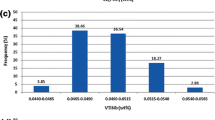Abstract
Accurate prediction of the mechanical properties in quenched steel parts has been considered by many recent researchers. For this purpose, different methods have been introduced. One of them is the quench factor analysis (QFA) which is based on continuous cooling rate during quenching. Another method for prediction of the mechanical properties in heat-treated alloys is artificial neural networks (ANNs). In the present research, QFA and ANN approaches have been used to predict the hardness of quenched steel parts in several different quench media. Then for the two methods, the predicted values have been compared with the experimental data. Results showed that the two methods are suitable in prediction of the hardness at different points of the quenched steel parts.








Similar content being viewed by others
References
L.A. Willey and W.L. Fink, Quenching of 75S Aluminum Alloy, Trans AIME, 1948, 175, p 414–428
J.T. Staley and J.W. Evancho, Kinetics of Precipitation During Continuous Cooling, Metall. Trans., 1974, 5, p 43–47
C.E. Bates, Predicting Properties and Minimizing Residual Stress in Quenched Steel Parts, J. Heat Treat., 1988, 6, p 27–45
G.E. Totten and C.E. Bates, Proc. 19th. Conf. on ‘Heat Treating Proceedings’, 1992, p 4.
G.E. Totten, L.C.F. Canale, A.C. Canale, and C.E. Bates, Quench Factor Analysis to Quantify Steel Quench Severity and its Successful Use in Steel Hardness Predictions: Quench Factor Analysis of AISI 1045 Steel, Proc. Int. conf. on ‘Federation for Heat Treatment and Surface Engineering’, 2006, p 384
G.E. Totten, Y.H. Sun, and C.E. Bates, Simplified Property Predictions for AISI 1045 Based on Quench Factor Analysis, Presented at: Proc. 3rd. Int. Conf. on Quenching and Control of Distortion, 1999, p 219–225
G.E. Totten, Y.H. Sun, G.M. Webster, C.E. Bates, and L.M. Jarvis, Computerized Steel Hardness Predictions Based on Cooling Curve Analysis, Proc. Conf. on Quenching and Distortion Control Technology, Chicago, 1998, p 183–191
M. Kianezhad and S.A. Sajjadi, Improvement of Quench Factor Analysis in Phase and Hardness Prediction of a Quenched Steel, Metall. Mater. Trans. A, 2012, 44, p 2053–2059
A. Fotovati and T. Goswami, Prediction of Elevated Temperature Fatigue Crack Growth Rates in Ti-6Al-4V Alloy—Neural Network Approach, Mater. Des., 2004, 25, p 547–554
A.M. Hassan, A. Mohammed, T. Hayajneh, and A. Turki, Prediction of Density, Porosity and Hardness in Aluminum-Copper-Based Composite Materials Using Artificial Neural Network, J. Mater. Proc. Technol., 2008, 209, p 894–899
M.P. Phaniraj and A.K. Lahiri, The Applicability of Neural Network Model to Predict Flow Stress for Carbon Steels, J. Mater. Proc. Technol., 2003, 141, p 219–227
G. Poshal and P. Ganesan, An Analysis of Formability of Aluminium Preforms Using Neural Network, J. Mater. Proc. Technol., 2008, 205, p 272–282
A.Z. Yazdi, S.A. Sajjadi, S.M. Zebarjad, and S.M.M. Nezhad, Prediction of Hardness at Different Points of Jominy Specimen Using Quench Factor Analysis Method, J. Mater. Proc. Technol., 2008, 199, p 124–129
M. Avrami, Kinetic of Phase Change, J. Chem. Phys., 1939, 7, p 1103–1112
R.D. Doherty and J.T. Staley, Improved Model to Predict Properties of Aluminum Alloys Products After Continuous Cooling, Metall. Trans. A, 1993, 24, p 2417–2427
P.A. Rometsch, M.J. Starink, and P.J. Gregson, Improvements in Quench Factor Modelling, J. Mater. Sci. Eng. A, 2003, 339, p 255–264
C.E. Bates, Selecting Quenchants to Maximize Tensile Properties and Minimize Distortion in Aluminum Parts, J. Heat Treat., 1987, 5, p 27–40
H.E. Kadi, Modeling the Mechanical Behavior of Fiber-Reinforced Polymeric Composite Materials Using Artificial Neural Networks—A Review, J. Compos. Struct., 2006, 73, p 1–23
K.D. Shafiei, Predicting the Bake Hardenability of Steels Using Neural Network Modeling, Mater. Lett., 2008, 62, p 173–178
Author information
Authors and Affiliations
Corresponding author
Rights and permissions
About this article
Cite this article
Kianezhad, M., Sajjadi, S.A. & Vafaeenezhad, H. A Numerical Approach to the Prediction of Hardness at Different Points of a Heat-Treated Steel. J. of Materi Eng and Perform 24, 1516–1521 (2015). https://doi.org/10.1007/s11665-015-1433-1
Received:
Revised:
Published:
Issue Date:
DOI: https://doi.org/10.1007/s11665-015-1433-1




